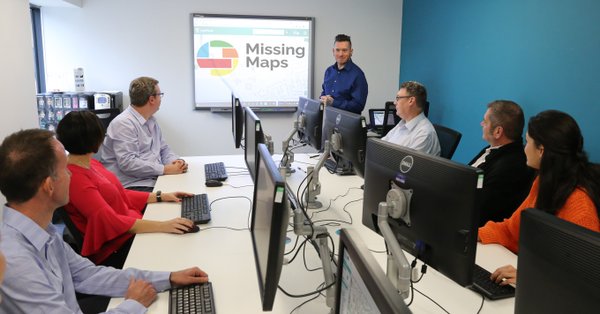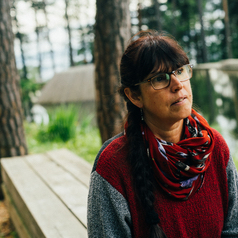natural disasters
See the following -
The Shutdown Will Harm the Health and Safety of Americans, even After it's Long Over
 With the U.S. federal government shutdown now the longest in history, it's important to understand what a shutdown means for the health and safety of Americans. The good news is that in the short run, the consequences are relatively few. But, as a researcher who studies natural disaster planning, I believe that Americans should be worried about the federal government's long-term ability to ensure good public health and protect the public from disasters. As the shutdown drags on, it increasingly weakens the government's ability to protect Americans down the road, long after federal workers are allowed to go back to work. Many of these effects are largely invisible and may feel intangible because they don't currently affect specific individuals...
With the U.S. federal government shutdown now the longest in history, it's important to understand what a shutdown means for the health and safety of Americans. The good news is that in the short run, the consequences are relatively few. But, as a researcher who studies natural disaster planning, I believe that Americans should be worried about the federal government's long-term ability to ensure good public health and protect the public from disasters. As the shutdown drags on, it increasingly weakens the government's ability to protect Americans down the road, long after federal workers are allowed to go back to work. Many of these effects are largely invisible and may feel intangible because they don't currently affect specific individuals...
- Login to post comments
The Supercharged Technology Behind The Nemo Blizzard Emergency Alert
With Winter Storm Nemo bearing down on the Northeast, many Americans are bracing for a blast of snow — but some Thursday got a blast of a different kind instead. Thousands of Verizon users reported getting an emergency alert about the coming blizzard on their cell phones that looked a bit like this... Read More »
- Login to post comments
The Thin Line Group
 ThinLine was founded to assist federal, state, and local government agencies, commercial and private sector organizations, with continuity planning, disaster prevention, and disaster response. ThinLine provides consulting services and material solutions that address evolving man-made threats such as cyber warfare and terrorist threats. In addition, the Thin Line also addresses the dynamic environmental conditions that follow catastrophic natural disasters such as failing infrastructure. The Thin Line Group supports individuals and organizations that need realistic and sustainable resilience solutions to protect life, property, information, and functions.
ThinLine was founded to assist federal, state, and local government agencies, commercial and private sector organizations, with continuity planning, disaster prevention, and disaster response. ThinLine provides consulting services and material solutions that address evolving man-made threats such as cyber warfare and terrorist threats. In addition, the Thin Line also addresses the dynamic environmental conditions that follow catastrophic natural disasters such as failing infrastructure. The Thin Line Group supports individuals and organizations that need realistic and sustainable resilience solutions to protect life, property, information, and functions.
- Login to post comments
The Troubling Data Behind America's Growing Wildfires
It's hard to process yesterday's deaths of 19 firefighters in Arizona. The tragedy is so stark an outlier that most states haven't seen that many deaths of firefighters due to wildfire in their combined histories. But there is one worrisome trend: fires are getting bigger and often deadlier. Read More »
- Login to post comments
thinkWhere Supports Global Humanitarian Project to Map Disaster Areas
 Geographic information and technology specialist thinkWhere is supporting the global humanitarian Missing Maps project by hosting a series of mapathons in Stirling, Scotland. In the evening of 13th June 2018, around 50 local community volunteers, including members of the thinkWhere team, will collaborate on a crowd-sourced Missing Maps data capture project. The fourth event of its kind organised by thinkWhere, it will be the first to be held at the company’s new premises at CodeBase, Stirling.
Geographic information and technology specialist thinkWhere is supporting the global humanitarian Missing Maps project by hosting a series of mapathons in Stirling, Scotland. In the evening of 13th June 2018, around 50 local community volunteers, including members of the thinkWhere team, will collaborate on a crowd-sourced Missing Maps data capture project. The fourth event of its kind organised by thinkWhere, it will be the first to be held at the company’s new premises at CodeBase, Stirling.
- Login to post comments
This Amazing House Can Be Built Just 5 Hours After A Disaster
When the earthquakes, hurricanes, and tsunamis of the future strike, these shelters--cut entirely from fiber board and super easy to assemble--could save us.
- Login to post comments
U.S. Declares The Largest Natural Disaster Area Ever Due To Drought
The blistering summer and ongoing drought conditions have the prompted the U.S. Agriculture Department to declare a federal disaster area in more than 1,000 counties covering 26 states. That's almost one-third of all the counties in the United States, making it the largest distaster declaration ever made by the USDA. Read More »
- Login to post comments
U.S. Trying to Find More Doctors to Send to Disaster Areas
A U.S. government program that sends doctors and nurses to disaster zones says it needs more health-care workers, as relief efforts during this hurricane season are near the end of a second month with no end in sight in Puerto Rico and the U.S. Virgin Islands. The National Disaster Medical System, which recently wrapped up big deployments to hurricane-ravaged areas in Texas and Florida, says it will start recruiting more medical professionals in the next few weeks...
- Login to post comments
Ushahidi – Revolutionizing Disaster Relief
With tools like Ushahidi, humanitarian work can now operate much differently than it has in the past. In the past, humanitarian work was limited in part by the small number of foreign journalists who were able to get to a disaster location and report on events there.
- Login to post comments
Ushahidi: The African Software Platform Helping Victims In Global Emergencies
During a natural disaster or in the midst of civil violence, the immediate need for those caught up in the situation is to escape and find a safe haven. But oftentimes in such chaos, information is difficult to come by and unreliable. Read More »
- Login to post comments
Weather Data 'Has Helped African Farmers Boost Production'
Farming communities in Africa are benefitting from an exchange programme to improve access to, and understanding of, climate science, according to a report presented at a seminar. Read More »
- Login to post comments
Weekly: Typhoon Yolanda Relief, Hackathons And Software Releases
This week, we recognise the efforts of the team at Volontaires internationaux en soutien aux opérations virtuelles (VISOV), who are crowdsourcing images of destruction and aid deployment in the wake of the Typhoon Yolanda in Philippines. This deployment, much like all other efforts being ran out there, will go a long way in helping to alleviate the suffering of the Filipino people. Read More »
- Login to post comments
What Western States Can Learn From Native American Wildfire Management Strategies
 News media coverage of wildfires commonly frames them as "natural disasters" - dangerous elements of the natural world over which humans have little control. The language of climate change, fear of fire and the sense that it has become inevitable can be overwhelming, leaving people with the view that little can be done to manage these events. But in fact, people aren't helpless. While fires can be dangerous, they are inevitable and necessary in many ecosystems, and humans have long adapted to them. Across North America, indigenous peoples have actively managed forest ecosystems through the use of fire. Euro-American settlers were struck by the rich biodiversity of California's forests, woodlands and prairies, but they didn't understand that indigenous people's use of fire was responsible for them.
News media coverage of wildfires commonly frames them as "natural disasters" - dangerous elements of the natural world over which humans have little control. The language of climate change, fear of fire and the sense that it has become inevitable can be overwhelming, leaving people with the view that little can be done to manage these events. But in fact, people aren't helpless. While fires can be dangerous, they are inevitable and necessary in many ecosystems, and humans have long adapted to them. Across North America, indigenous peoples have actively managed forest ecosystems through the use of fire. Euro-American settlers were struck by the rich biodiversity of California's forests, woodlands and prairies, but they didn't understand that indigenous people's use of fire was responsible for them.
- Login to post comments
When Bushfires Sound Alarms, Social Media Can Save Lives
These days, social media and online apps have become a major source of disaster information and warnings. But how much can we trust them? Read More »
- Login to post comments
Why The Yosemite Fire Is Especially Scary
No one knows what started the Rim Fire, the 160,000 acre blaze that's ripping through the western side of Yosemite National Park. But nearly 4,000 firefighters have been dispatched to try to stop it using helicopters, bulldozers, and flame retardants. Although the situation is starting to look up—20 percent of the fire is now contained, up from 7 percent just two days ago—the authorities predict the fire will keep spreading... Read More »
- Login to post comments